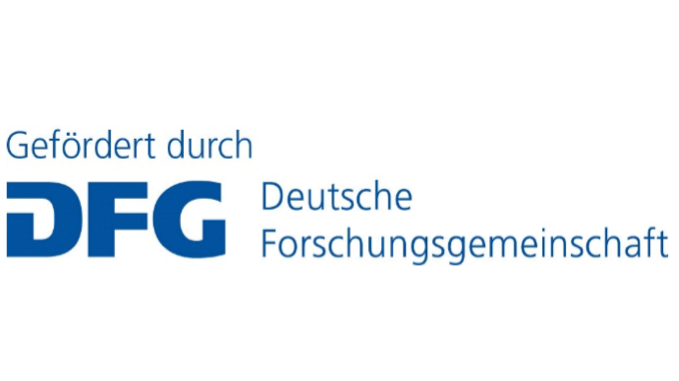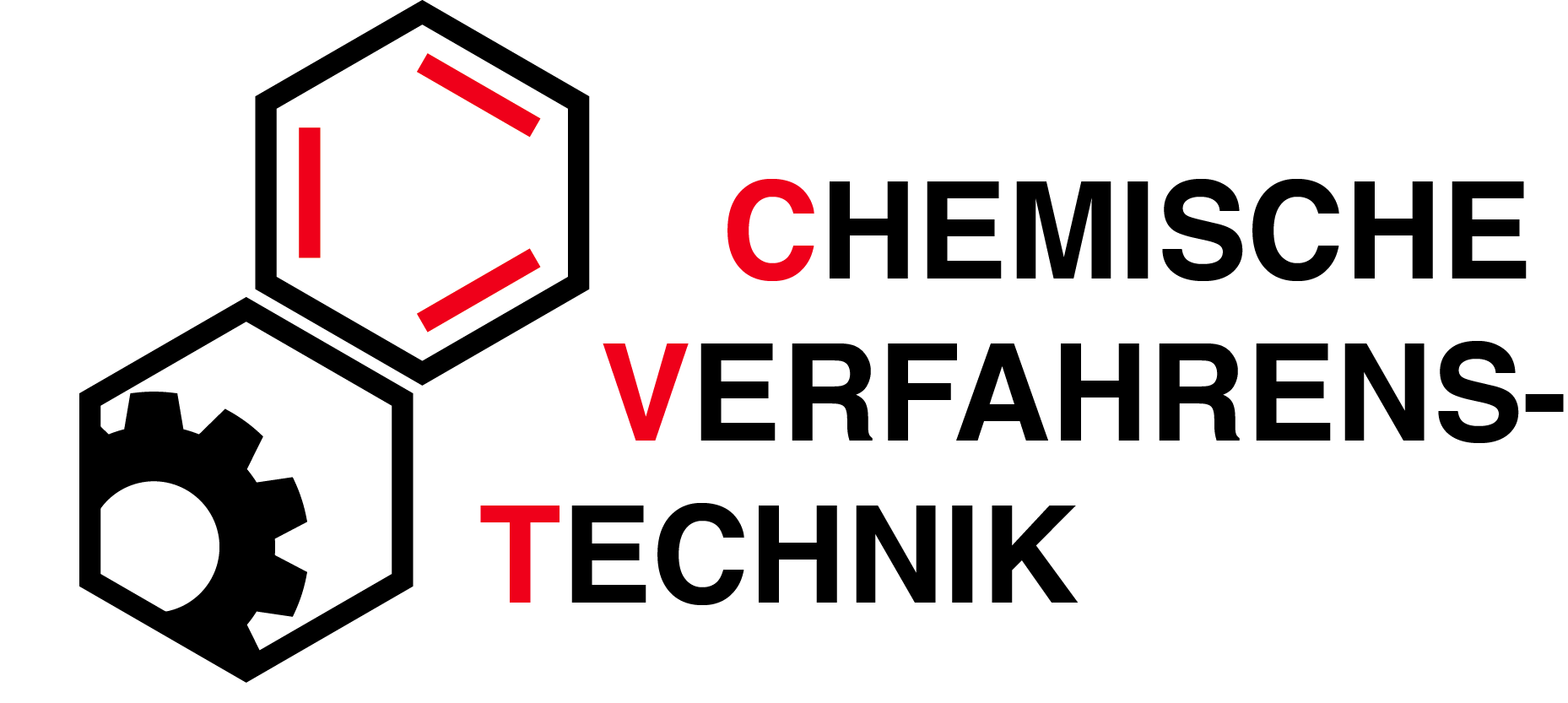Electrochemical high-throughput characterization of metallic micro samples (SFB 1232)
Metal corrosion refers to a process that involves degradation of the material functionality. The annual costs of corrosion damages amount to billions of euro. Corrosion phenomena, like passivity or pitting corrosion, can be determined by electrochemical characterization methods.

Electrochemical impedancy as a function of martensite content. Impedance and corrosion resistance decrease with increasing martensite content.
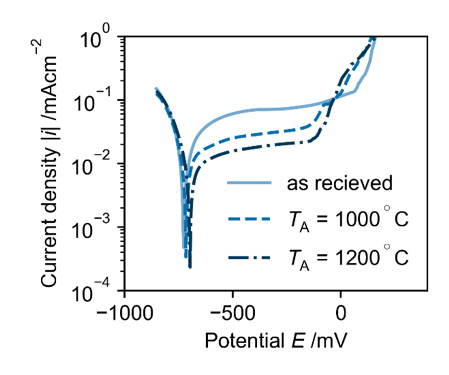
Polarization scan of untreated and heat treated steel. The heat treatment influences the micro structure of the steel and changes the electrochemical corrosion behavior of the material.
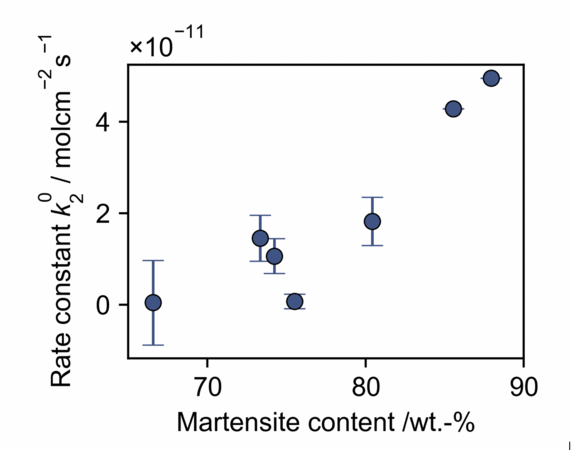
Simulation of passsive layer growth reveals the influence of martensite content on growth kinetics (k20).
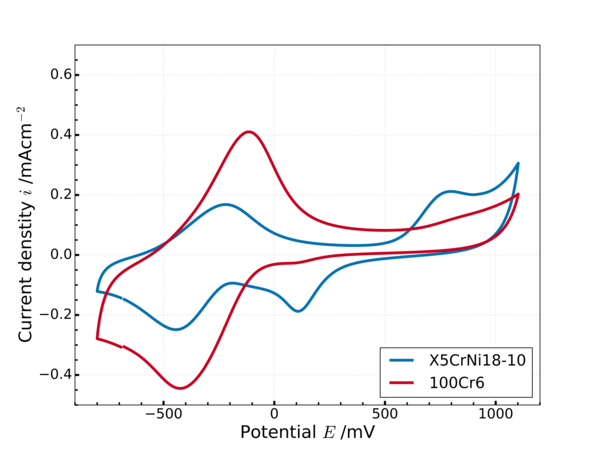
Cyclic voltammograms of different alloys in 0.1 M phosphate buffer. The stainless steel (X5CrNi18-10) shows a lower passive current and thus a better passivation.
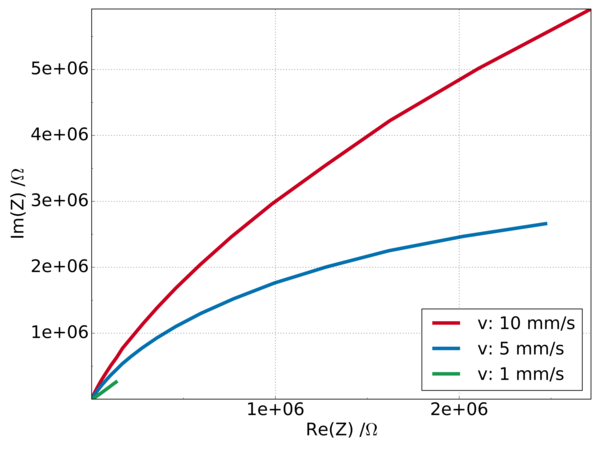
Electrochemical impedance measurements of cold formed stainless steel. Due to different forming velocities (v = 10mms-1/5 mms-1/1 mms-1) different martensite contents can be achieved. These differences lead to changes in the passivity and thus the electrochemical impedance.
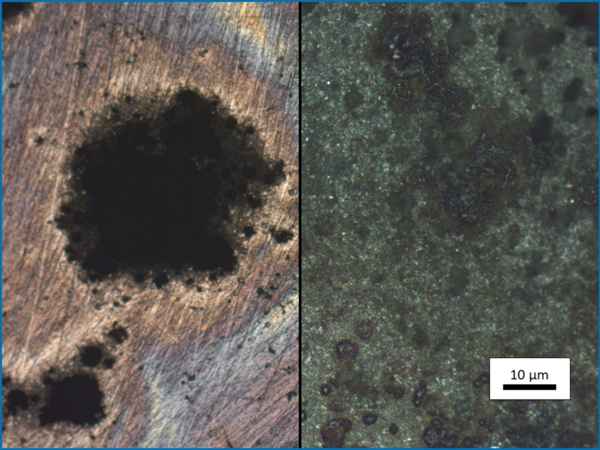
Corrosion damage due polarisation scans in different electrolytes; left: 0.1 M phosphate buffe with 3.5 wt.-% NaCl; right: pure 3.5 wt.-% NaCl solution. By adding phosphate buffer tot he electrolyte (left) pure pitting corrosion can be observed. Without phosphate buffer the pitting corrosion is overlapped by additional dissolution processes.
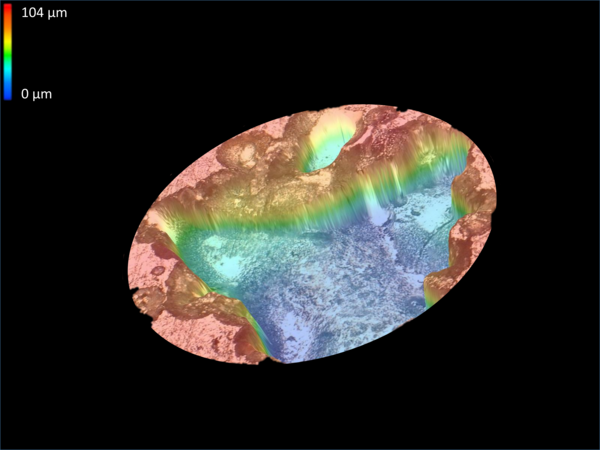
Height profile after pitting corrosion on cold formed stinless steel
The aim of the project is the characterization of corrosion and material properties of micro samples by electrochemical methods like cyclic voltammetry, impedance spectroscopy and electrochemical noise technique. One main research question is the correlation of electrochemical measurements on micro samples in short time periods (seconds or minutes) and corrosion phenomena on metallic components in real time (several years). An additional research focus are the effects of changes in the micro structure on the ability to form protective passive layers.
The project ‘Electrochemical high-throughput characterization of metallic micro samples’ is part of the Collaborative Research Center SFB 1232 ‘Farbige Zustände’ about the development of new high-performance materials. As part of the Collaborative Research Center micro samples of different composition and treatment have to be generated and characterized. This project is responsible for the electrochemical characterization of the samples and passivity is of particular interest.
The passivity of iron-based materials is caused by a formation of an oxide layer on the surface of the metal. This passive layers can protect the metal surface against corrosion attacks. The stability of the passive layer is related to the composition and the micro structure of the alloy. A possibility to improve the passive layers through micro structure optimization has to be explored by high throughput electrochemical measurements.
Relevant publications
Ingmar Bösing's PhD thesis
Bösing, I. et al. (2020) Corros. Mater. Degrad. 1(1), 6. https://doi.org/10.3390/cmd1010006
S. Imani Moqadam et al. (2020) Metals, 10(3), 297. https://doi.org/10.3390/met10030297
I. Bösing et al. (2020) Int. J. Electrochem. Sci. 15, 319 – 333. http://doi.org/10.20964/2020.01.09
M. Steinbacher et al. (2019) High-Throughput 8(4), 22. https://doi.org/10.3390/ht8040022
I. Bösing et al. (2019) AIP Advances 9, 065317. https://doi.org/10.1063/1.5094615
I. Bösing et al. (2018) MATEC Web of Conferences 190, 04002, http://doi.org/10.1051/matecconf/201819004002.
I. Bösing et al. (2017) International Journal of Corrosion 9425864, http://doi.org/10.1155/2017/942586.
Relevant files
Contact:
Dr.-Ing. Ingmar Bösing
Room UFT 2220
Fon 0421 - 218 - 63466
